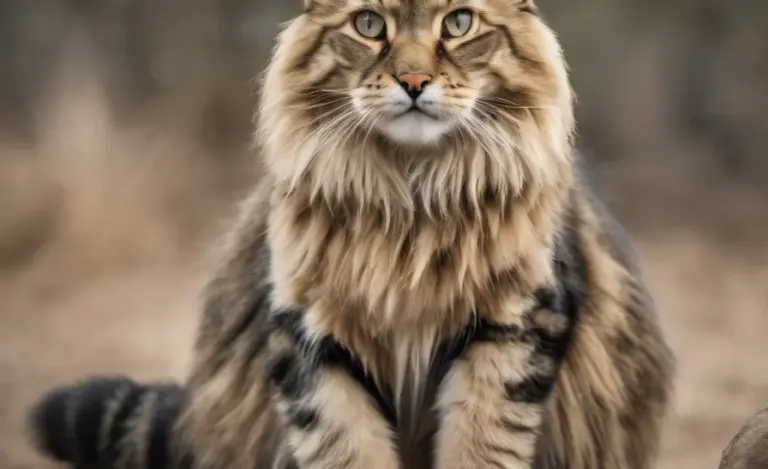History of Russian Blue Cats: The Ultimate Secret
Quick Summary:
The History of Russian Blue cats is fascinating! These cats are known for their stunning blue-gray coats and bright green eyes. They likely originated in Archangel, Russia, and were brought to Europe by sailors in the 1860s. Russian Blues quickly became popular for their beauty and intelligence. Today, they are beloved family pets around the world. Their calm nature and playful personality make them wonderful companions. Learning about their history helps us appreciate these special cats even more!
Have you ever wondered where those elegant, blue-gray cats with the striking green eyes come from? Russian Blue cats are truly special, and their story is full of interesting twists and turns. It’s easy to admire their beauty, but understanding their history gives us an even deeper appreciation for this wonderful breed.
Finding reliable information about their origins can sometimes be tricky. That’s why I’ve put together a clear, step-by-step guide to explore the fascinating history of Russian Blue cats. We’ll uncover their possible origins, their journey to becoming beloved pets, and how they’ve charmed their way into our hearts. Get ready to discover the captivating story of the Russian Blue!
The Mysterious Origins of Russian Blue Cats
The precise origins of the Russian Blue cat are shrouded in a bit of mystery, but the most widely accepted theory points to the city of Arkhangelsk (also known as Archangel) in northern Russia. This port city, located on the White Sea, is believed to be the place where these cats first developed their distinctive blue-gray coats.
The Archangel Connection
Why Arkhangelsk? Several clues support this theory:
- Native to the Region: The harsh climate of northern Russia could have contributed to the Russian Blue’s dense, plush coat. This adaptation would have helped them survive the cold winters.
- “Archangel Blues”: Historically, these cats were sometimes referred to as “Archangel Blues” or “Foreign Blue” cats, directly linking them to the city of Arkhangelsk.
- Genetic Traits: Some believe that the specific genetic traits responsible for their unique coat color and texture developed in relative isolation in this region.
A Sailor’s Tale
The story goes that sailors trading in Arkhangelsk brought these beautiful cats back to Europe in the mid-1860s. Imagine these stunning felines disembarking onto the docks of England and other European ports, turning heads with their unusual appearance!
Early Appearances in Europe
Once in Europe, Russian Blue cats began to capture the attention of cat fanciers and breeders. Their striking appearance made them popular in early cat shows.
The Crystal Palace Cat Shows
The late 19th century saw the rise of cat shows, and Russian Blues were among the breeds showcased. Notably, they were exhibited at the Crystal Palace in London, one of the most prestigious venues for these events. In the early days, they were often shown alongside other blue cat breeds, making it difficult to distinguish them as a separate breed.
Queen Victoria’s Interest
Queen Victoria, a known animal lover, was reportedly fond of blue cats, which further boosted their popularity. Her interest in the breed helped to solidify their status as desirable pets among the upper class.
Breed Development and Recognition
The early 20th century marked a period of breed development and standardization for the Russian Blue. Breeders worked to refine the breed’s characteristics and establish a consistent type.
Challenges and Crossbreeding
During World War II, the Russian Blue population dwindled significantly. To preserve the breed, breeders outcrossed them with other breeds, such as the British Shorthair and Siamese. While this helped to maintain the breed’s numbers, it also introduced some changes to their appearance.
Post-War Revival
After the war, breeders worked to restore the original Russian Blue characteristics. They carefully selected cats that exhibited the desired traits, such as the plush, blue-gray coat, green eyes, and elegant body structure. This dedicated effort helped to re-establish the Russian Blue as a distinct and recognizable breed.
Russian Blues in America
The Russian Blue cat made its way to the United States in the early 1900s, but it wasn’t until after World War II that the breed gained significant popularity.
Post-War Popularity
As more people became aware of the Russian Blue’s unique appearance and gentle temperament, their popularity grew. Breeders began to focus on developing the breed in America, and Russian Blues started to appear more frequently in cat shows and in homes across the country.
Breed Standards and Variations
Different cat associations developed their own breed standards for the Russian Blue. While the core characteristics remained consistent, there were slight variations in the preferred body type and coat color. Today, the Russian Blue is recognized by all major cat associations, including The Cat Fanciers’ Association (CFA) and The International Cat Association (TICA) TICA.
The Unique Characteristics of Russian Blue Cats
What makes the Russian Blue so special? It’s more than just their beautiful coat. Here’s a closer look at their defining characteristics:
Physical Appearance
- Coat: The Russian Blue’s most distinctive feature is their plush, double coat. It has a silvery sheen due to the silver-tipped hairs.
- Color: They are known for their blue-gray coat, which is a medium shade of gray with a bluish hue.
- Eyes: Their eyes are a striking emerald green, which provides a beautiful contrast to their coat color.
- Body: They have a graceful, slender body with long legs and a wedge-shaped head.
Temperament and Personality
Beyond their physical beauty, Russian Blues are also known for their wonderful temperament:
- Gentle and Calm: They are typically quiet and gentle cats, making them great companions for families and individuals alike.
- Intelligent: Russian Blues are known for their intelligence and can be easily trained. They often enjoy playing games and solving puzzles.
- Playful: Despite their calm demeanor, they are also playful and enjoy interactive play with their owners.
- Loyal: They tend to bond closely with their families and can be quite affectionate.
Caring for a Russian Blue
If you’re considering bringing a Russian Blue into your home, it’s important to understand their care needs.
Grooming
The Russian Blue’s dense coat requires regular grooming to prevent matting and minimize shedding. Here’s what you need to know:
- Brushing: Brush them at least once a week with a slicker brush or a metal comb.
- Bathing: They don’t require frequent baths unless they get particularly dirty. Bathing them too often can dry out their skin.
- Nail Trimming: Trim their nails regularly to prevent them from becoming too long and sharp.
Nutrition
A balanced diet is essential for keeping your Russian Blue healthy and happy. Consider these points:
- High-Quality Food: Feed them a high-quality cat food that is appropriate for their age and activity level.
- Portion Control: Avoid overfeeding, as Russian Blues can be prone to weight gain.
- Fresh Water: Always provide them with access to fresh, clean water.
Health
Russian Blues are generally healthy cats, but like all breeds, they can be prone to certain health issues. Regular veterinary check-ups are crucial. According to the Cornell Feline Health Center, it’s important to be aware of potential health concerns and to provide preventive care.
- Vaccinations: Keep them up-to-date on their vaccinations to protect them from common feline diseases.
- Parasite Control: Use flea and worm prevention products as recommended by your veterinarian.
- Dental Care: Regular dental cleanings can help prevent dental disease.
The Russian Blue Today
Today, the Russian Blue continues to be a beloved breed around the world. Their striking appearance, gentle personality, and intelligence make them wonderful companions for people of all ages. Whether you’re a longtime cat lover or a first-time owner, the Russian Blue is sure to steal your heart.
Popularity and Recognition
The Russian Blue consistently ranks high in popularity among cat breeds. Their unique characteristics and affectionate nature have made them a favorite among cat enthusiasts. They are also frequently featured in cat shows and competitions, where they continue to impress judges with their beauty and grace.
Russian Blues in Popular Culture
Russian Blues have also made their mark in popular culture. They have been featured in movies, television shows, and advertisements, further increasing their visibility and appeal. Their elegant appearance and calm demeanor make them ideal for portraying sophisticated and refined feline characters.
Russian Blue Cat Breed Standards
Breed standards are guidelines that describe the ideal characteristics of a breed. These standards are used by cat show judges to evaluate cats and determine which ones best represent the breed. Here’s a summary of the Russian Blue breed standards from various cat associations:
| Characteristic | Description |
|---|---|
| Coat | Dense, plush, double coat with a silvery sheen. |
| Color | Even, bright blue-gray with silver-tipped hairs. |
| Eyes | Intense emerald green. |
| Body | Long, slender, and graceful with fine-boning. |
| Head | Wedge-shaped with prominent whisker pads. |
| Ears | Large, pointed, and set wide apart. |
| Tail | Long and tapering. |
Russian Blue vs. Similar Breeds
While the Russian Blue is unique, it’s sometimes confused with other blue-gray cat breeds. Here’s a comparison to help you distinguish them:
Russian Blue vs. British Shorthair
Both breeds have a blue-gray coat, but there are key differences:
| Characteristic | Russian Blue | British Shorthair |
|---|---|---|
| Coat Texture | Plush, dense, and double-coated with silver tipping. | Dense, crisp, and plush, but without the distinct silver tipping. |
| Body Type | Slender and graceful. | Cobby, round, and sturdy. |
| Eye Color | Emerald green. | Copper or gold (though some can have green). |
| Head Shape | Wedge-shaped. | Round and broad. |
Russian Blue vs. Chartreux
The Chartreux is another blue-gray breed with some similarities, but also notable differences:
| Characteristic | Russian Blue | Chartreux |
|---|---|---|
| Coat Texture | Plush, dense, and double-coated with silver tipping. | Dense, water-repellent, and slightly woolly. |
| Body Type | Slender and graceful. | Muscular and sturdy. |
| Eye Color | Emerald green. | Gold to copper. |
| Head Shape | Wedge-shaped. | Broad and rounded with full cheeks. |
Fun Facts About Russian Blue Cats
To add a little extra fun, here are some interesting facts about Russian Blue cats:
- They are known for their “smiling” faces: The shape of their mouth and whisker pads gives them a distinctive, gentle expression.
- They are often hypoallergenic: While no cat is truly hypoallergenic, Russian Blues produce less of the Fel d 1 protein, which is a common allergen.
- They are intelligent and trainable: They can be taught tricks and often enjoy playing fetch.
- They have a long lifespan: With proper care, Russian Blues can live well into their teens, with some even reaching 20 years or more.
- They are sensitive to their environment: Russian Blues thrive in calm and stable environments.
FAQ About the History of Russian Blue Cats
1. Where do Russian Blue cats originally come from?
Russian Blue cats are believed to have originated in Arkhangelsk, a port city in northern Russia. This is why they were sometimes called “Archangel Blues.”
2. How did Russian Blue cats get to Europe?
It is thought that sailors brought Russian Blue cats from Arkhangelsk to Europe in the mid-1860s. They quickly became popular among cat enthusiasts.
3. Were Russian Blue cats always recognized as a distinct breed?
In the early days of cat shows, Russian Blue cats were often shown alongside other blue cat breeds. It took time for breeders to establish them as a separate and distinct breed.
4. What happened to Russian Blue cats during World War II?
The Russian Blue population declined significantly during World War II. To preserve the breed, breeders outcrossed them with other breeds, such as the British Shorthair and Siamese.
5. When did Russian Blue cats become popular in the United States?
Russian Blue cats arrived in the United States in the early 1900s, but their popularity grew significantly after World War II.
6. What are the key characteristics of Russian Blue cats?
Russian Blue cats are known for their plush, blue-gray coat, emerald green eyes, and graceful body. They also have a gentle and intelligent temperament.
7. Are Russian Blue cats hypoallergenic?
While no cat is truly hypoallergenic, Russian Blues produce less of the Fel d 1 protein, which is a common allergen. This can make them a better choice for people with mild allergies.
Conclusion
The history of Russian Blue cats is a captivating journey from the icy ports of northern Russia to the hearts of cat lovers around the world. Their unique appearance, gentle personality, and intelligence have made them a beloved breed for generations.
Understanding their origins and breed development allows us to appreciate these elegant felines even more. From their early appearances in European cat shows to their rise in popularity in America, the Russian Blue has consistently charmed us with their beauty and grace.
Whether you’re a seasoned cat owner or considering welcoming a Russian Blue into your home, knowing their history can deepen your appreciation for this remarkable breed. So, the next time you admire a Russian Blue’s stunning blue-gray coat and striking green eyes, remember the fascinating story behind this extraordinary cat!





![Timeline of Norwegian Forest Cat: [Ultimate] Guide](https://britishshorthairask.com/wp-content/uploads/2025/11/timeline-of-norwegian-forest-cat-ultimate-guide-768x469.webp)